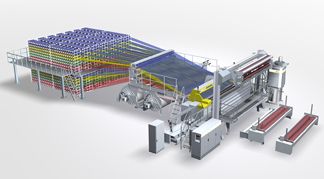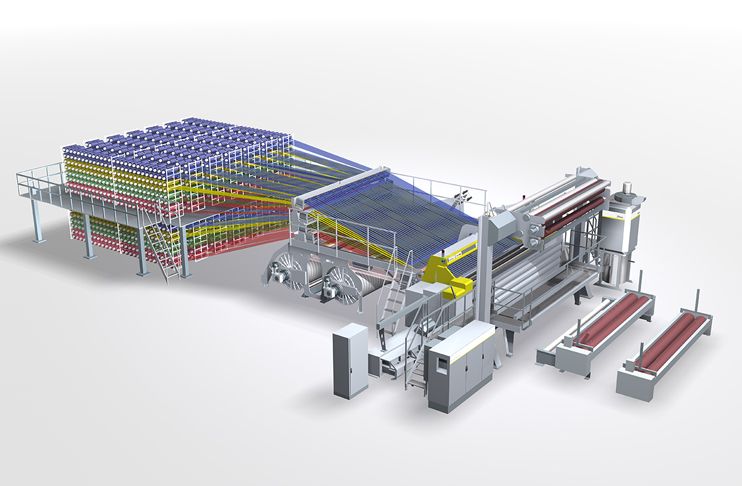
Printed carpets – rugs are capturing an ever-growing market share. Traditionally, printing has been mainly used for commercial carpeting, but the quality is now so good that rugs are also being printed. With the introduction of the Zimmer Colaris system, it is now possible to print any colour on a woven rug. Using Zimmer’s penetration booster system, the ink saturates the fibres all the way to the back of the carpet.
Up till now, most printed carpet has been wall-to-wall tufted carpeting with a pattern printed on it. This kind of carpet does not resemble a woven rug at all. Tufted carpet consists of a backing fabric in which the pile tufts are inserted and a secondary backing to hold the pile tufts in place. No pattern is visible on the back of the carpet, and the secondary backing makes the carpet quite stiff. In contrast, woven rugs are soft and pliable and show the pattern on the back.
When it comes to quality and durability, woven carpets are clearly superior. The pile row density of a tufted carpet is rather limited: 8 pile rows / inch (315 pile rows / metre) is the norm; woven rugs can have 1000 pile rows / metre or more. The difference in pile tufts per square metre is even greater: 99,255 versus 1,000,000 pile tufts / m².
Another big disadvantage of tufted carpet is that it is not recyclable. It consists of too many different materials: pile yarn, backing fabric, secondary backing – these are all different materials. Woven carpets can be made entirely from a single material – e.g. polyester yarn – so they are easy to recycle. This is completely in line with the current “cradle-to-cradle” trend.
Woven carpet, rugs: production cost but high quality
If the right weave structure is used for a woven carpet, for example a W-binding, the pile fixation is so good that no back coating is needed to hold the pile tufts in place. (The more commonly used V-binding for Jacquard woven rugs requires a light latex coating.)
Although the production cost of woven carpet is slightly higher than that of tufted printed carpet, the advantages clearly outweigh the difference in price.
Greige material, as the undyed substrate for printed carpet is often called, can be woven on any machine with a 3-position Jacquard, such as the Stäubli ALPHA 500 series. ALPHA 500 machines provide weaving widths up to 5.3m and can produce a variety of different W‑structures. Pile row densities of 1,000 per metre or more are possible, and any common pile yarn material can be used. Printing is normally done on nylon or on much cheaper polyester yarn, but wool, cotton and viscose can also be used. Printing on polypropylene yarn is not possible yet.
For a firmer back, a “stuffer thread” can be incorporated into the back of the carpet. This stuffer can be made of cheap waste material. All structures can be woven on a Stäubli ALPHA 500 LEANTEC machine as well. This carpet machine without a Jacquard is very suitable for plain carpets like greige material.
ALPHA 500 LEANTEC carpet weaving machine
This machine is equipped with a Stäubli UNIVAL 500 servo-controlled dobby with up to 16 shafts. Because there is no Jacquard mounted on top of the machine, it requires less headroom; it will fit in buildings where a standard carpet machine would not fit.
Does printing hold the future? It might, considering the current rapid improvements in quality. The advantages are clear: There is no need to stock yarns in all different colours, switching from one design or from one colour palette to another is a matter of seconds, and even orders for single carpets can be taken. But one thing is clear: Rugs, whether Jacquard or printed, should be woven. The difference in price compared with tufted carpet is minimal – and the quality is vastly superior.
By Bert Pols, Stäubli Textile


